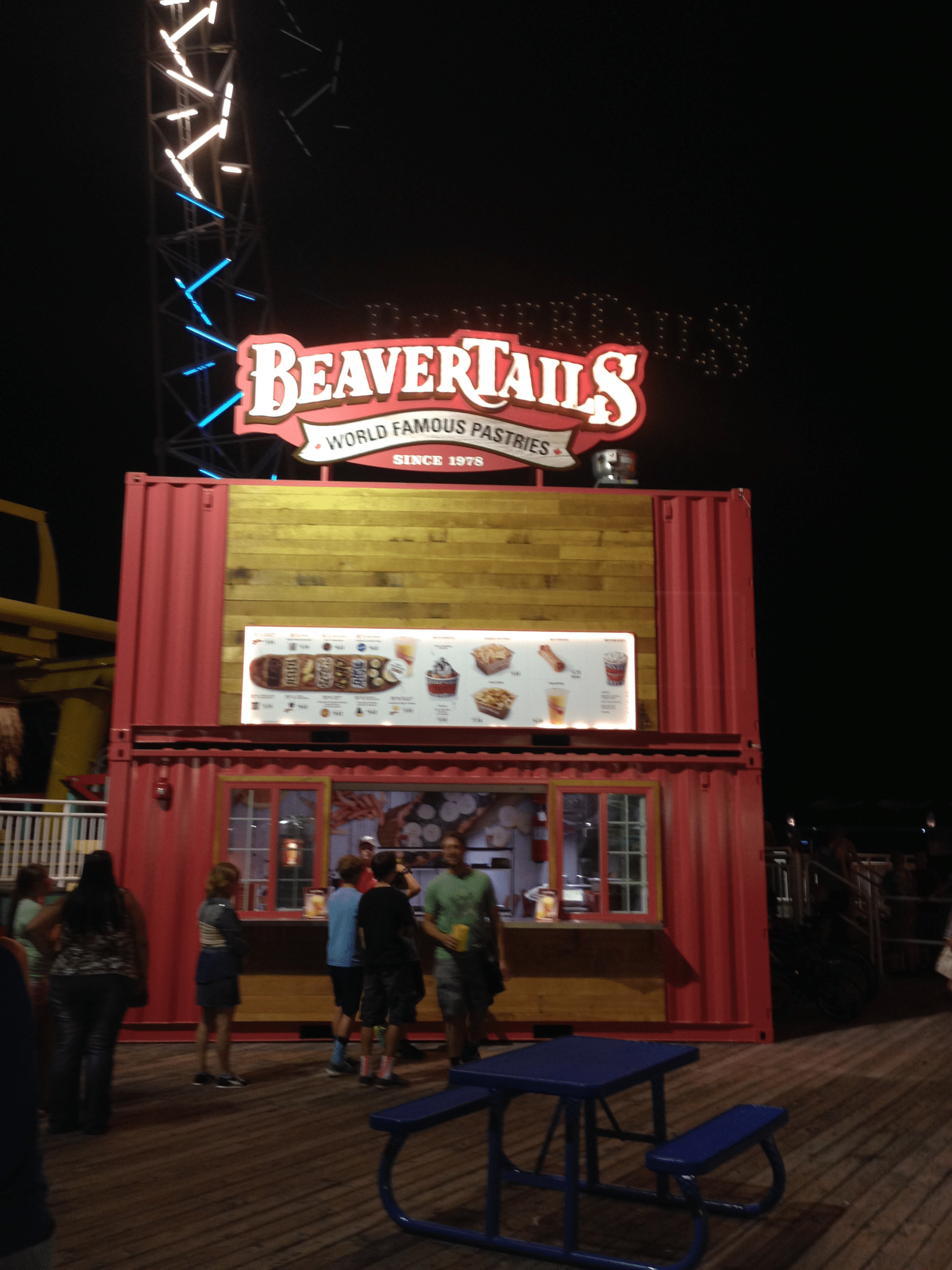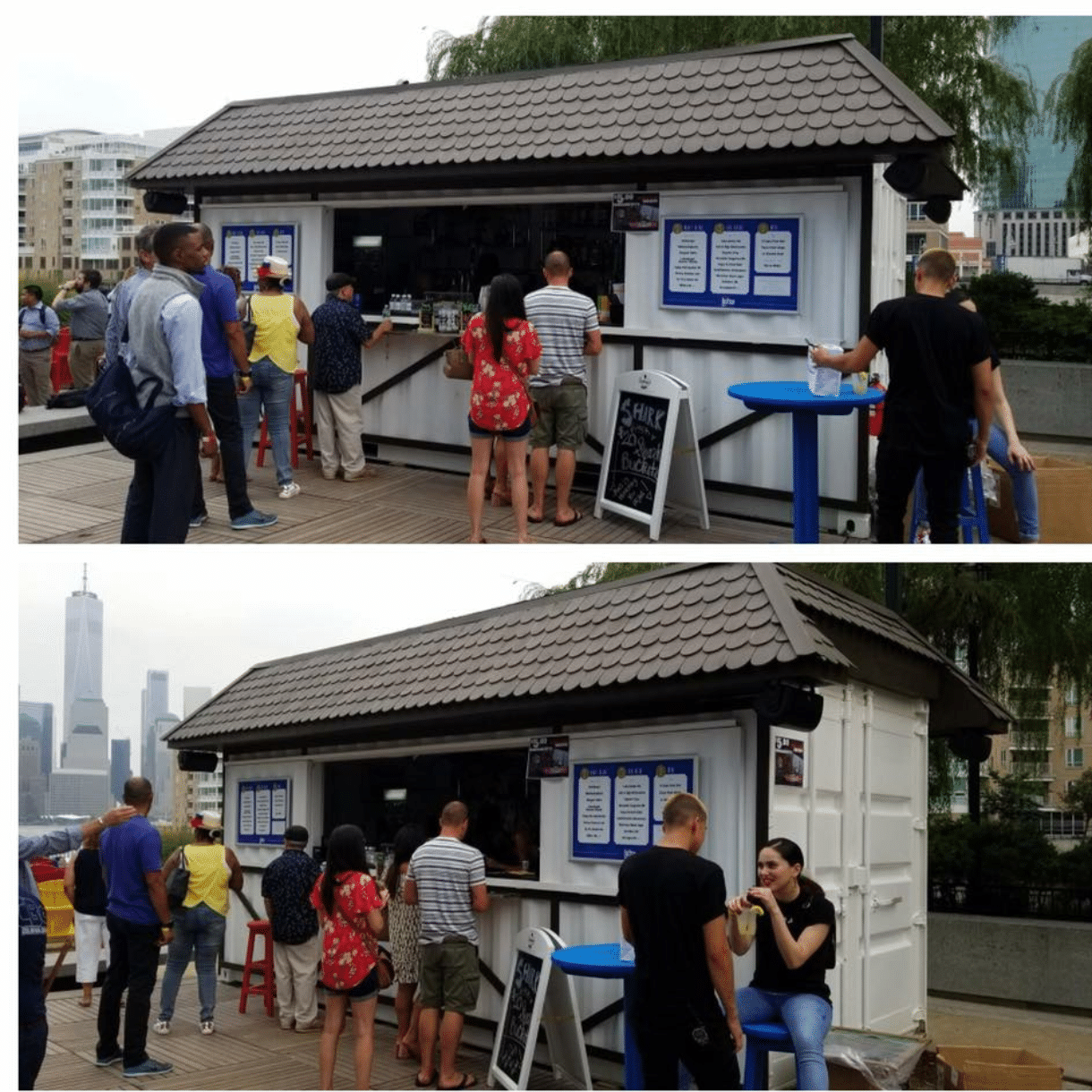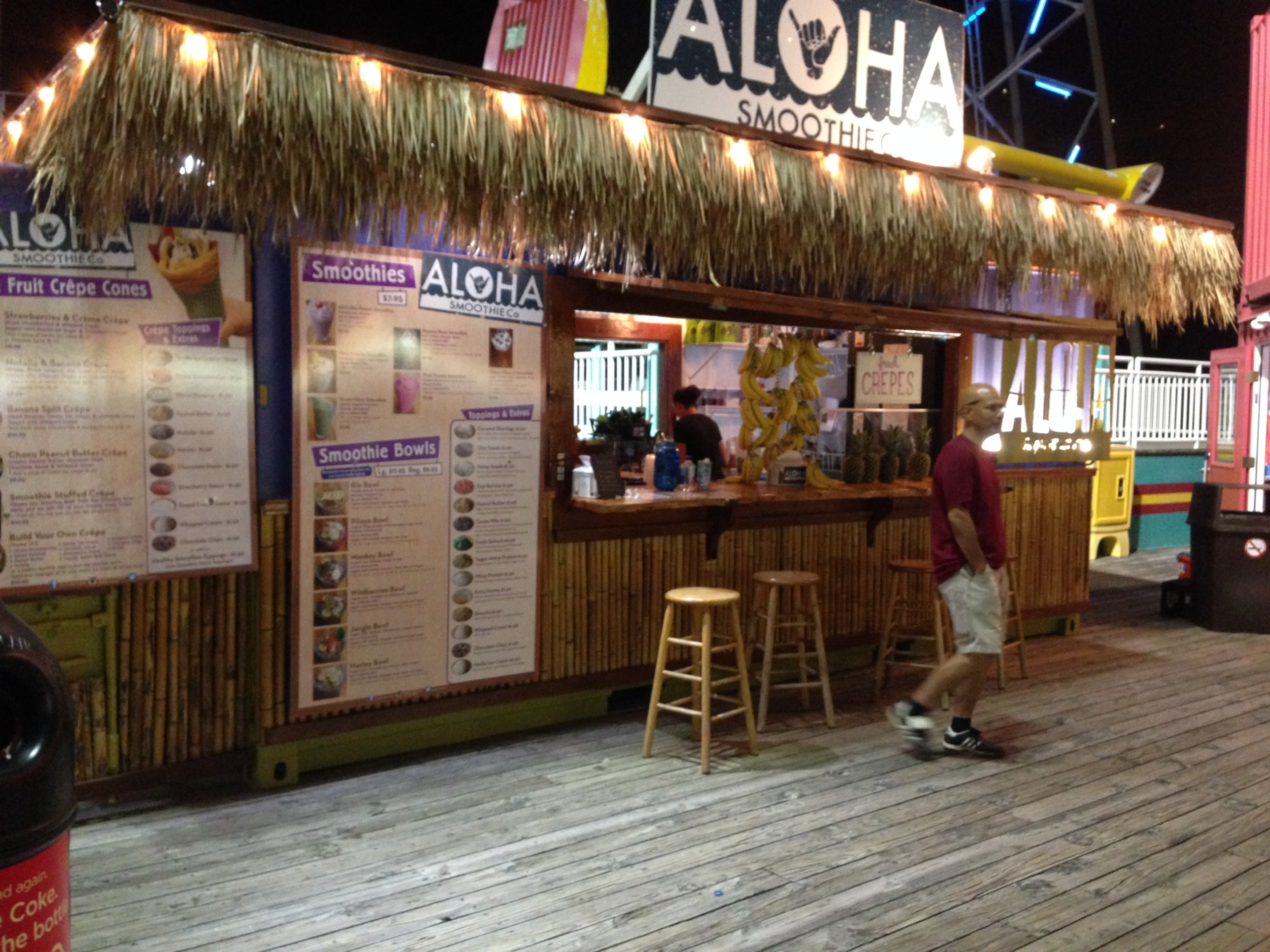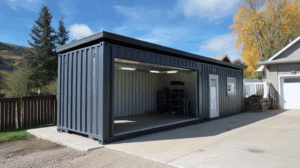Introduction
Shipping container restaurants have become a popular trend in the food industry over the past few years. The concept is simple: take a repurposed shipping container, add some kitchen equipment, tables, and chairs, and voila!
You have yourself a unique dining experience. But why are these types of restaurants so appealing?
First of all, it’s the novelty factor. People love trying new things, and eating at a restaurant constructed from an old shipping container definitely falls into this category.
Secondly, these types of establishments are often more affordable than traditional brick-and-mortar restaurants. This allows for more creative exploration on the part of restaurant owners, who can focus their resources on curating interesting menus.
Why Shipping Container Restaurants are More Than Just Another Trendy Fad
In addition to being unique and affordable dining options, shipping container restaurants also offer something that traditional restaurants often lack: flexibility. Because they can be placed just about anywhere, owners of restaurant containers have more control over where their businesses are located and can easily move them if need be.
This is particularly beneficial in cities with high rent prices or saturated markets where finding a prime location for a restaurant can be difficult. But perhaps the most compelling reason why shipping container restaurants are becoming increasingly popular is that they offer an opportunity to repurpose materials that would otherwise go to waste.
Shipping containers are sturdy structures designed to withstand harsh weather conditions while transporting goods across oceans. But when they’re no longer needed for this purpose, these massive steel boxes often end up in junkyards or landfills where they take up valuable space.
The idea behind repurposing these containers into functional spaces like restaurants is not only creative but also environmentally responsible – an important consideration given our current climate crisis. By finding new ways to utilize seemingly useless materials like old shipping containers, we’re reducing waste and lessening the impact of our consumer culture on the planet.
The Appeal of Shipping Container Restaurants

Experience Dining Like Never Before
If you’re tired of the same old restaurant experience, then shipping container restaurants are just the thing for you. These unique spaces offer a dining experience like no other.
The industrial chic vibe of food trucks combined with the creativity and ingenuity that goes into designing these spaces makes for a truly one-of-a-kind experience. Plus, with many shipping container restaurants located in up-and-coming neighborhoods and food truck parks, customers will be able to enjoy their meals in an atmosphere that’s fun and exciting.
Affordability and Flexibility
Another great aspect of shipping container restaurants is their cost affordability and flexibility. Because they’re repurposed structures, owners can save money on construction costs while also having complete control over the design process.
Shipping containers can be modified to fit any space requirements or layout needs. Whether it’s a small coffee shop, bar, or full-service restaurant, these structures provide unparalleled agility when it comes to creating your dream eatery.
Additionally, because they’re often located in trendy areas or food truck parks, owners can avoid expensive rent costs while still attracting customers with their unique concept. All of these benefits add up to make shipping container restaurants an attractive option for those looking to break into the food industry or those who want to create a truly unique dining experience.
Designing a Shipping Container Restaurant
The Process
Designing a shipping container restaurant is no easy feat. There are many considerations that must be taken into account, such as the whole structure, layout, plumbing, and electrical work.
But the end result can be truly unique and eye-catching. When designing a shipping container restaurant, it’s important to work with a professional who has experience in this type of construction.
The layout must be carefully thought out to make the most of the limited brick-and-mortar space available. Plumbing and electrical work will need to be installed from scratch, so it’s crucial to have experienced professionals handle this part of the process.
Despite these challenges, there are many creative design ideas that can be incorporated into these unique spaces. For example, you might choose to keep the industrial look of the shipping container or paint it with bright colors to make it stand out in a crowded food scene.
You might also incorporate greenery or other natural elements to soften the look of the space. This type of attention to detail will make your shipping container restaurant truly memorable for customers.
Creative Design Ideas

One way to create an unforgettable design for your shipping container restaurant is by incorporating unique materials into the restaurant container interior design. For example, you could use reclaimed wood or metal accents throughout the space.
You could also use lighting fixtures and communal tables as focal points by choosing bold and modern options. Another creative idea is incorporating technology into your restaurant design by using digital screens for menus or interactive displays that help customers understand how certain dishes are made.
Overall, designing a shipping container restaurant requires careful planning and consideration, but if done correctly can create an unforgettable dining experience for customers. Don’t be afraid to get creative with your design choices!
The Menu
The Importance of a Tailored Menu
When it comes to the menu at a shipping container restaurant, it’s essential to create something that matches the space and vibe of the establishment. This means taking into account the limited space available in a shipping container, as well as any unique design elements that have been incorporated into the space. It’s also important to consider what type of food will appeal to customers in this kind of setting.
For example, if the restaurant is located in an industrial area or near a construction site, offering hearty and filling meals might be more appealing than lighter options. On the other hand, if the restaurant is located in a trendy urban area, offering more creative and gourmet options might be a better fit.
Examples of Successful Menus
One great example of a successful menu at a shipping container restaurant or food hall is The Boxpark in London. This innovative food court features over 40 different vendors serving everything from sushi to burgers.
Each vendor has their own unique menu, but all dishes are served in eco-friendly packaging made from recycled materials. Another successful shipping container restaurant is The Stackt Market in Toronto.
This outdoor market features over coffee shops and 120 different vendors selling everything from food to clothing. The restaurants’ on-site offer everything from Middle Eastern cuisine to vegan ice cream.
In both cases, these successful shipping container restaurants have managed to tailor their menus to meet the needs and preferences of their target audience while still staying true to their own unique brand identity. By offering high-quality food and drinks that are perfectly suited for their particular location and customer base, they’ve managed to stand out from the competition and build loyal followings among foodies and locals alike.
Sustainability and Eco-Friendliness
Repurposing Shipping Containers for Restaurants is an Eco-Friendly Choice
Shipping container restaurants don’t just offer an innovative dining experience; they also offer an eco-friendly option for restaurant owners. Repurposing shipping containers that would otherwise be discarded is a fantastic way to reduce waste, conserve energy, and decrease the carbon footprint associated with building a traditional brick-and-mortar restaurant. Using repurposed shipping containers is one of the best ways to ensure that materials are being reused instead of being sent to landfills.
The use of recycled materials reduces the need for new materials mining or harvesting, which means less energy consumption, fewer greenhouse gas emissions, and less waste generated in the process. Additionally, recycled shipping containers are built from durable steel and can last up to 25 years with little maintenance, which makes them a sustainable choice for business owners who want to reduce their environmental impact.
Incorporating Sustainable Practices into Shipping Container Restaurants
Being eco-friendly doesn’t end with using repurposed shipping containers – there are other sustainable practices that can be incorporated into these establishments as well. One of the most significant ways to be environmentally responsible in a restaurant setting is by reducing food waste.
Food waste accounts for more than 30% of landfill space in the US alone! Composting food scraps and offering smaller portions or take-home boxes for leftovers will significantly cut down on this unnecessary waste.
Another way restaurants can reduce their carbon footprint is by sourcing local ingredients instead of importing them from far away places. This not only helps support local farmers but also reduces transportation emissions associated with long-distance food deliveries.
Additionally, using energy-efficient equipment will help lower energy consumption while reducing your carbon footprint further. The bottom line?
Shipping container restaurants are not just trendy – they represent a commitment to sustainability and eco-friendliness that every restaurant owner should embrace. By using recycled materials and incorporating sustainable practices, we can reduce our environmental impact while still offering a unique dining experience for customers.
Challenges and Considerations
The Curse of Limited Space
One of the most significant challenges that come with operating a restaurant in a shipping container is the limited space available. With the restaurant industry being highly competitive, it’s crucial to utilize every square inch efficiently. The size of shipping containers can be restrictive, and designing a functional layout that maximizes space utilization can be challenging.
However, this is not an insurmountable challenge. One solution is to use modular design concepts in which each section of the permanent structure of the container serves a specific purpose.
Another option is to embrace minimalism, using only essential furniture and equipment to avoid cluttering the space further. Creating an open-plan design can help you make use of every inch available while also making your space look more spacious.
Noise Concerns: Keeping It Down
Another potential issue that arises when opening a restaurant inside a shipping container is noise concerns. Shipping containers are sturdy and robust but are not soundproofed by default. As a result, people passing by may hear the noise emanating from your establishment, which could negatively impact their dining experience.
To solve this problem, one solution could be installing sound-absorbing materials such as acoustic panels or insulation material within the walls or ceiling to reduce external noise levels. Additionally, you could consider keeping any loud equipment away from areas where customers sit while also investing in high-quality speakers for music playback at low volumes.
Starting a business inside repurposed shipping containers comes with some unique challenges and considerations that need careful thought before launch day arrives. Addressing these challenges, head-on can help ensure your restaurant operates smoothly and profitably for years to come!
Success Stories
The Rusty Taco
One of the most successful examples of a shipping container restaurant is The Rusty Taco in Dallas, Texas. This establishment has been serving up delicious tacos and margaritas to customers since 2012 from their two-story shipping container restaurant. The design features large windows, which allow plenty of natural light into the space, and an even outdoor seating and patio area for diners.
The Rusty Taco has been praised for its unique design and delicious food, which includes everything from breakfast tacos to vegetarian options. The success of this establishment has inspired other entrepreneurs to follow suit and create their own shipping container restaurants.
Boxpark Shoreditch
Boxpark Shoreditch in London is another successful example of a shipping container restaurant project. This establishment opened in 2011 and was one of the first pop-up malls made entirely out of repurposed shipping containers. It features over sixty units, including restaurants, cafes, bars, and retail stores.
Boxpark Shoreditch has become a popular destination for tourists and locals alike due to its unique concept and variety of offerings. The use of shipping containers as the building blocks for this mall has allowed it to be easily transported or repurposed if needed.
Conclusion
Shipping container restaurants are an innovative concept that offers entrepreneurs a unique opportunity to create affordable yet attractive establishments with plenty of character. With their flexibility in design and eco-friendliness, using repurposed shipping containers as restaurant spaces have proven to be an innovative solution that helps reduce waste while creating jobs.
The success stories discussed above showcase how these restaurants can succeed with creative design ideas and clever use of limited space. As more people embrace sustainability and seek out unique dining experiences, it’s clear that the trend toward shipping container restaurants will continue to grow in popularity around the world!





